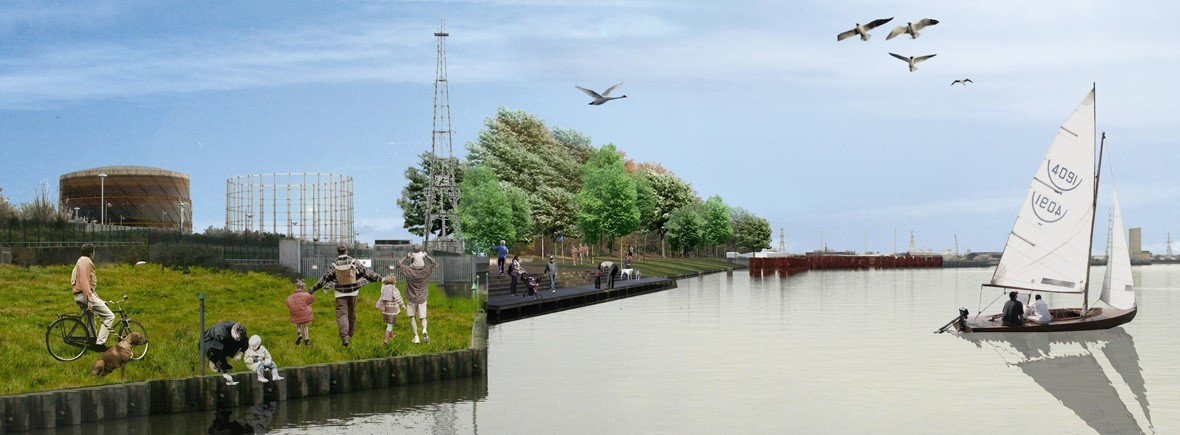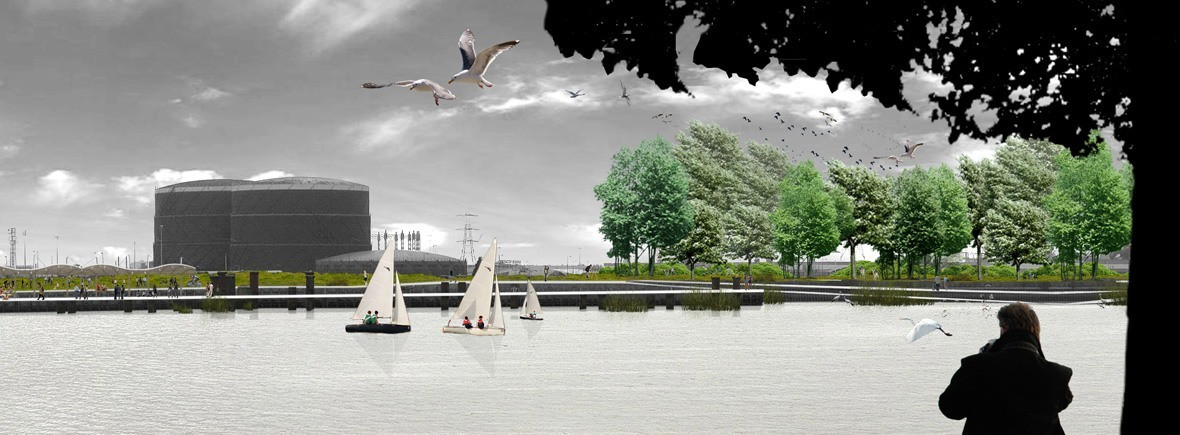


The plan by Karres en Brands and Maxwan for Cross River Park in the eastern part of London is based on a new type of urban park. The stimulus for the park at the time was the proposed—and controversial—Thames Gateway Bridge. The most important objective is to put the highly fragmented field—literally and figuratively—on the map.

The proposal is not a design, but a strategy: the crucial areas of the park are identified in a subtle manner in order to trigger broad-based change. In this way, the master plan is created from the identity of the area itself; no final representations are designed, but rather possibilities visualised.

The current area is characterised by its fragmented green spaces, a landfill, generic shopping centres, and industrial buildings. The need to create a new, cohesive identity is addressed at various levels. A green framework that grows over time, with shared ownership and both public and private land, gives the park a feeling of continuity. Location-specific interventions have a positive effect over time on the area as a whole. Typical of the concept for Cross River Park—unlike rigid, conventional solutions—are the flexible possibilities for development. The design strategy is also not limited to the existing site, but can expand into adjacent neighbourhoods and districts: it is thus a new way to perpetrate landscape urbanism.


| Location. | London, Untited Kingdom |
|---|---|
| Assignment | Feasibility study |
| Size | 350 hectare |
| Design | 2007 – 2008 |
| Status | Completed feasibility study |
| Client | Design for London, Greater London Authority |
| In collaboration with | Maxwan, Entec UK, Tribal Group |